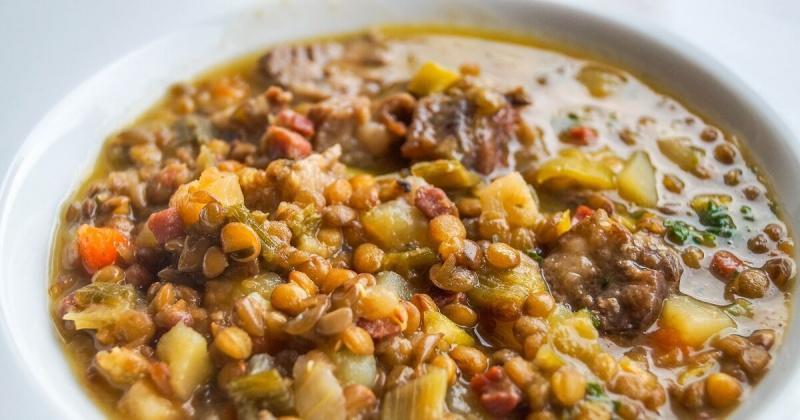Africa-Press – Cape verde. Anyone looking for the best restaurant to eat cachupa, without knowing that there are ancient recipes for the dish that is a symbol of Cape Verde, lying around on the streets every weekend, with guardians eager to tell stories.
Leila Vaz, 30, opens her terrace shortly after sunrise and, as it is Saturday, gathers firewood to light a bonfire, between the road and the sidewalk, in the centre of Praia, the capital.
A warped, half-burnt pot, full of water, is steaming to cook corn, lots of corn, the historical staple of Cape Verde, resilient to all the hardships of drought and famine, etched into the memory of the nine islands.
“No two cachupa recipes will ever be the same”, she assures, because there are several ingredients in play on top of the corn, vegetables on one side, pieces of pork on the other: “I won’t say, my recipe is my recipe, it’s a secret that cannot be revealed”.
The secret “handful” was taught to her by her mother, in Achada Monte Negro, Santa Cruz, a rural area of the island of Santiago, when Leila was 15 years old – and her mother had already learned “from her mother”, everything from the land, nothing from packaged products.
Up the street, next to another bonfire, there is another large cooking pot on the side of the road and Dionísia de Pina, 42 years old, follows a recipe from her island, Fogo, that she has been refining for three decades, since she was a child.
“First, the corn, then the beans, of different qualities – including the sapatinha beans -, then add the bacon and the rest of the pork, carrot and pumpkin”, she describes, surrounded by boxes with other ingredients.
After all, it seems that there is a secret here too: a small pile of embers next to the large cooking pot heats a frying pan with onion, in a dark broth, to add to the cachupa, which still has to be seasoned with ground pepper before being served.
Some people compare it to feijoada, others to cozido à portuguesa. The truth is that it takes the whole morning to make: the corn takes a while to cook and then there is the right moment to add each of the other ingredients – and some, like the meat, require prior preparation.
In 2017, Cape Verde managed to enter the Guinness Book of Records by cooking the largest cachupa in the world, weighing six tons, in the center of Praia, which was distributed to thousands of people there.
On the edge of the São Filipe road, Sofia Semedo, 32, took advantage of the weekend tradition to include the dish on the menu of the terrace that reopened, after her sister-in-law closed it and emigrated to the Azores.
“They also sell hamburgers, but here everyone likes cachupa more. It’s not even comparable. And they buy it in large quantities, to store and then sauté”, she describes in the following days, while chopping vegetables for the pot.
And could a restaurant that prepares fast food on the side of the road improvise another type of cachupa, for example, with spaghetti instead of corn?
Sofia doesn’t understand the question, even after hearing it clearly, and finally bursts out laughing and calls out to her colleagues to address the absurdity: “Oh, cachupa without corn, no, no, no.”
If cachupa is the queen of Cape Verdean cuisine, corn is king.
“When I was a boy, dinner was always cachupa and breakfast [the next day] was refogado,” says Kalu, the nickname of Carlos Moreira, 64, who grew up with cachupa – an expression used by many older Cape Verdeans.
“It’s still like that in the countryside,” where people still grow corn and raise pigs, but not in the city, where rice or pasta are the quickest and lightest solution: “corn is heavier and, on Saturdays, we don’t work, we’re at home with our families,” and his stomach appreciates a calm digestion, he says, as he waits for his plate to be filled.
It’s almost 1:00 p.m. and there are impatient people on Dionísia’s terrace.
Manuel Varela is the first to be served, with two plastic take-away boxes, priced at 250 escudos (2.27 euros) each, measured out with a very full plate.
“Just as mackerel is [traditional] in São Vicente, here it’s cachupa,” he says, in a portrait of the islands’ gastronomic diversity – even in cachupa, some people only add fish, others make a mix, but in every pot, pork reigns supreme, the most popular dish.
So much so that the only man who appears to be cooking cachupa on the roadside of São Filipe, near the National Stadium, entered the art dominated by women, because his family already had a meat business.
“Pork gives so much that making cachupa was the next step”, explains Isaías Gomes, 38, back from a large pot that, like the others, can serve between 40 and 50 dishes every Saturday.
On Leila’s terrace, one of the portions goes to the owner, Renato Semedo, who posts about Saturday’s cachupa on the establishment’s social media page, linked to a more global picture.
“Wherever they are, the Cape Verdean diaspora also has the tradition of cooking it on Saturdays”, he said, to show that cachupa is more than a dish, just as Cape Verde is more than an archipelago in the Atlantic.
For More News And Analysis About Cape verde Follow Africa-Press






